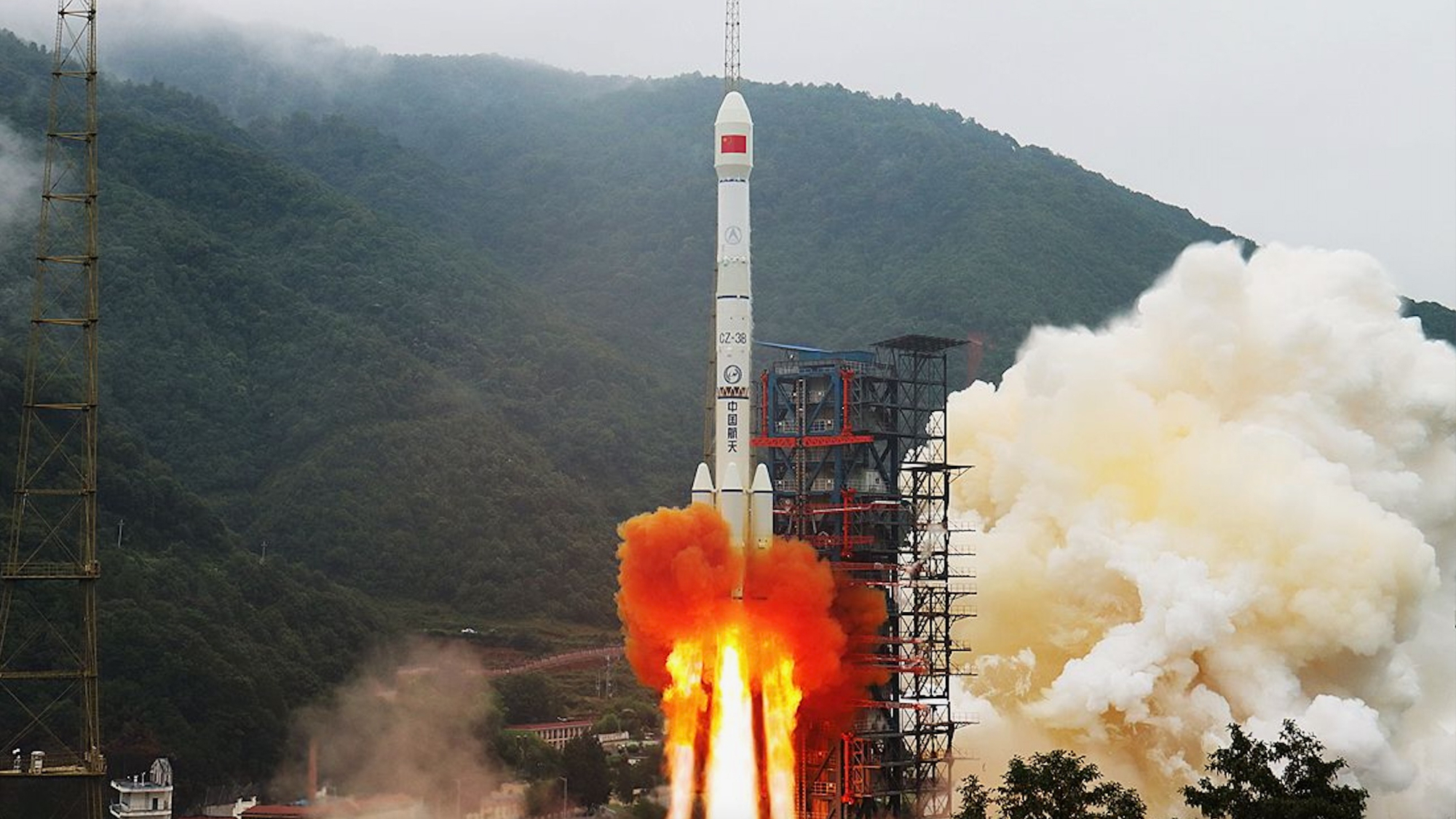Biggest Full Moon of 2018 Shines in Spectacular New Year's Photos
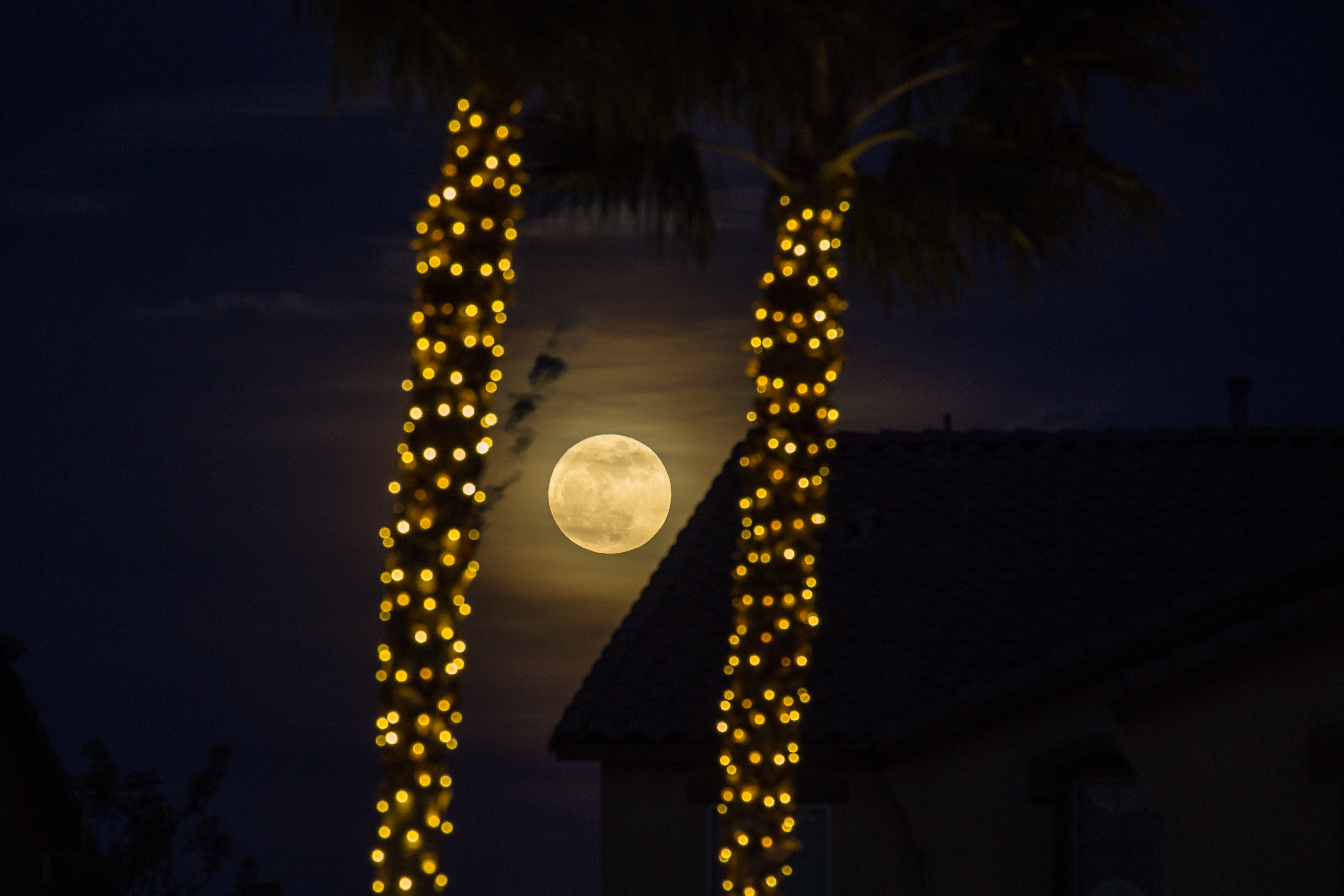
Skywatchers got a glimpse of a spectacular full moon this New Year's Day — the largest the moon will appear in 2018.
Although the "biggest full moon of 2018" doesn't look that different from a typical full moon — it is at the moon's closest point in orbit, called perigee, but it appears a bit bigger and brighter than other full moons — the beautiful lunar appearance let viewers ring in the new year anyway. [See our full gallery of the Jan. 1 supermoon here!]
Gianluca Masi, an astrophysicist with The Virtual Telescope Project, caught some moon views from Rome, where the livestreaming telescope followed the lunar event:
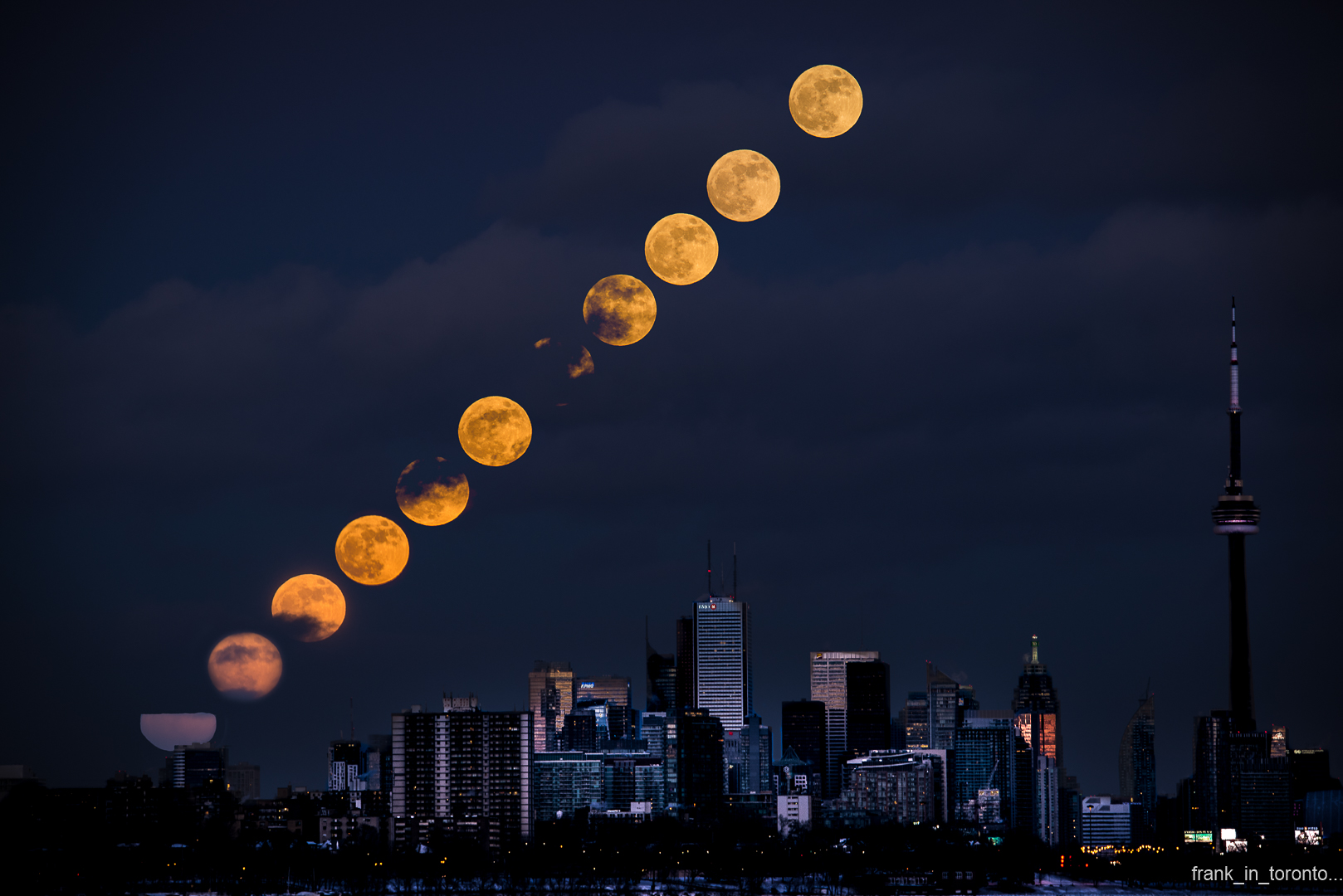
Frank Job sent Space.com this multiple-image composite of the full moon over Toronto, using varying shutter speeds to keep the moon at the same brightness and also brightening the city in post-processing.
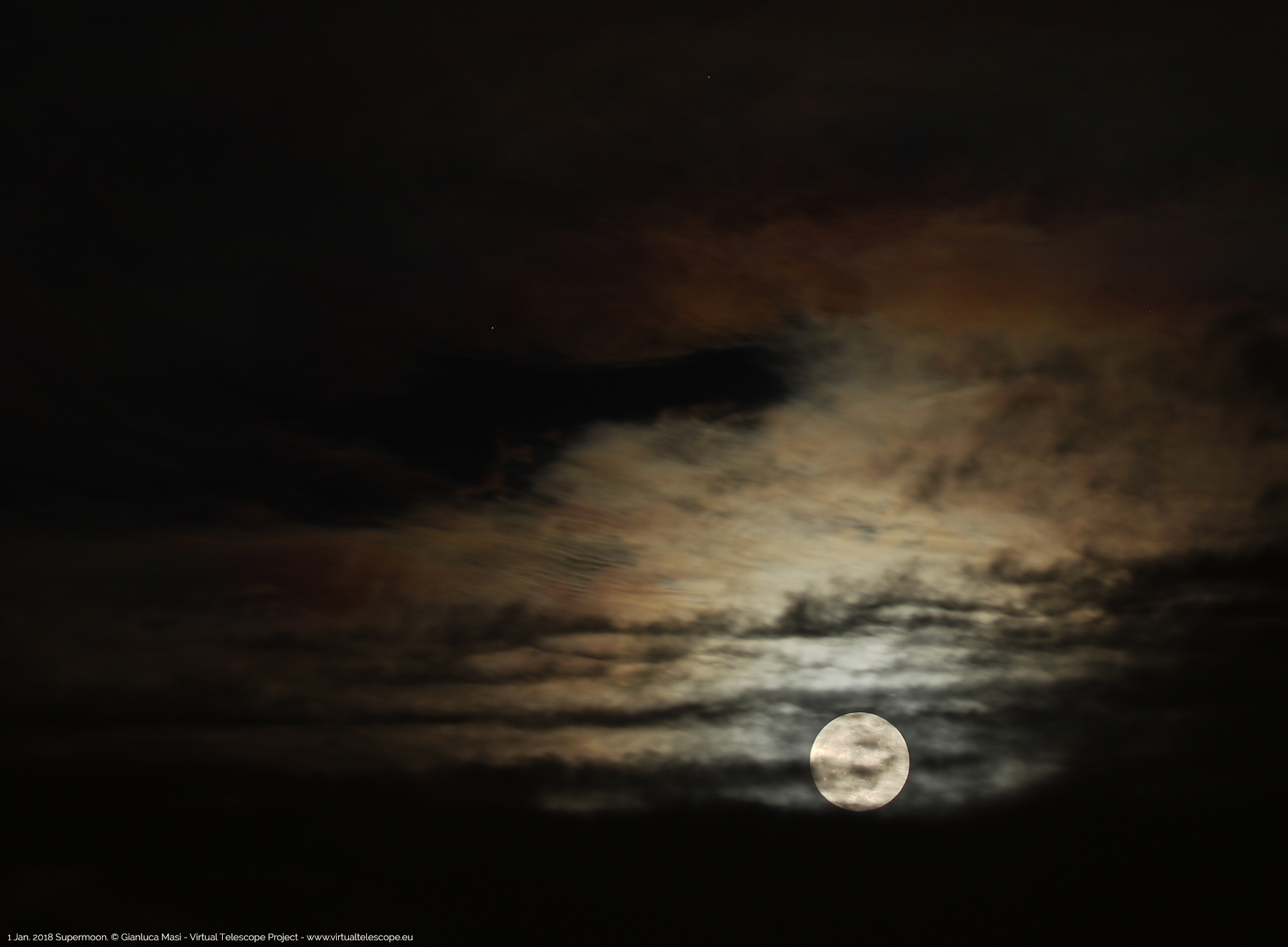
Tyler Leavitt, photographing the moon from Las Vegas, told Space.com: "It was a rare cloudy night here in Las Vegas; still a couple cool photos of the supermoon rising between the clouds and palm trees."
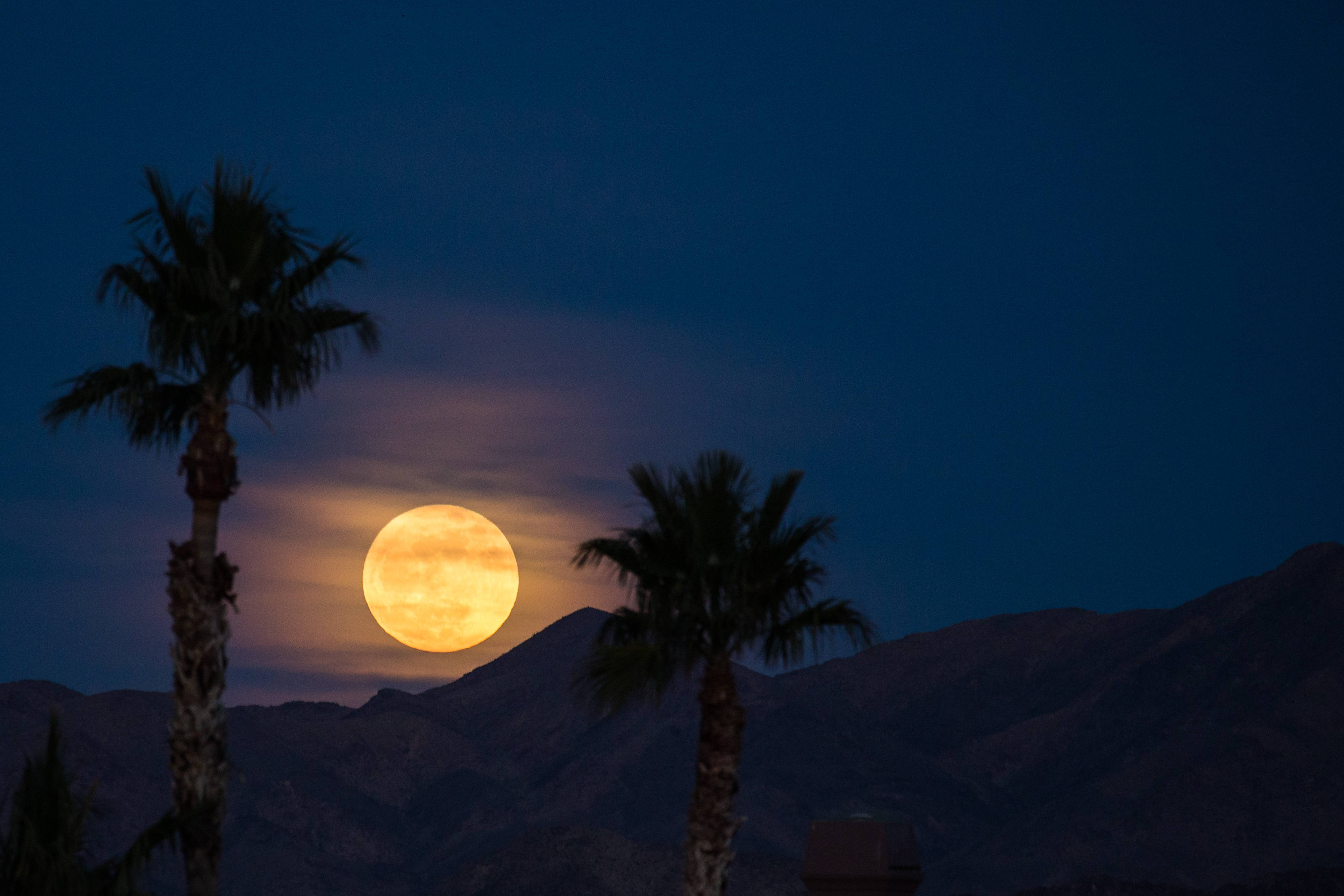
Alexander Krivenyshev sent gorgeous images of the moon above New York's Empire State Building from Hoboken, New Jersey:
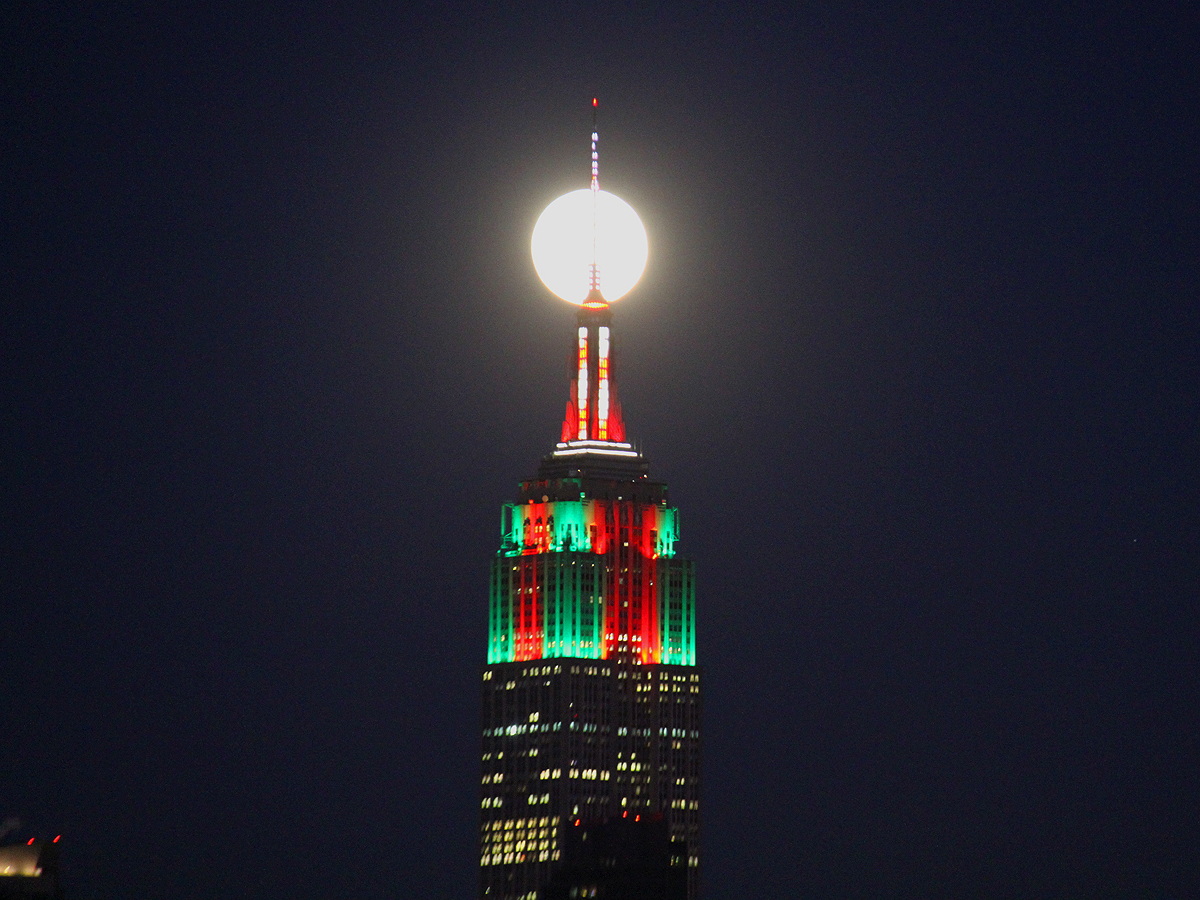
On Jan. 1, the moon appeared 14 percent bigger and 30 percent brighter than when the full moon is at its farthest point from Earth. The next full moon, which will occur on Jan. 31, will be at the moon's closest approach as well (although it won't be quite as close as it was on Jan. 1) — and it will present a total lunar eclipse! On that day, skywatchers will see the moon turn blood-red as it passes through the shadow cast by the Earth.
Breaking space news, the latest updates on rocket launches, skywatching events and more!
Editor's note: If you captured an amazing photo of the Jan. 1 New Year's Day full moon and would like to share it with Space.com for a story or gallery, send images and comments to spacephotos@space.com.
Email Sarah Lewin at slewin@space.com or follow her @SarahExplains. Follow us @Spacedotcom, Facebook and Google+. Original article on Space.com.
Join our Space Forums to keep talking space on the latest missions, night sky and more! And if you have a news tip, correction or comment, let us know at: community@space.com.

Sarah Lewin started writing for Space.com in June of 2015 as a Staff Writer and became Associate Editor in 2019 . Her work has been featured by Scientific American, IEEE Spectrum, Quanta Magazine, Wired, The Scientist, Science Friday and WGBH's Inside NOVA. Sarah has an MA from NYU's Science, Health and Environmental Reporting Program and an AB in mathematics from Brown University. When not writing, reading or thinking about space, Sarah enjoys musical theatre and mathematical papercraft. She is currently Assistant News Editor at Scientific American. You can follow her on Twitter @SarahExplains.
